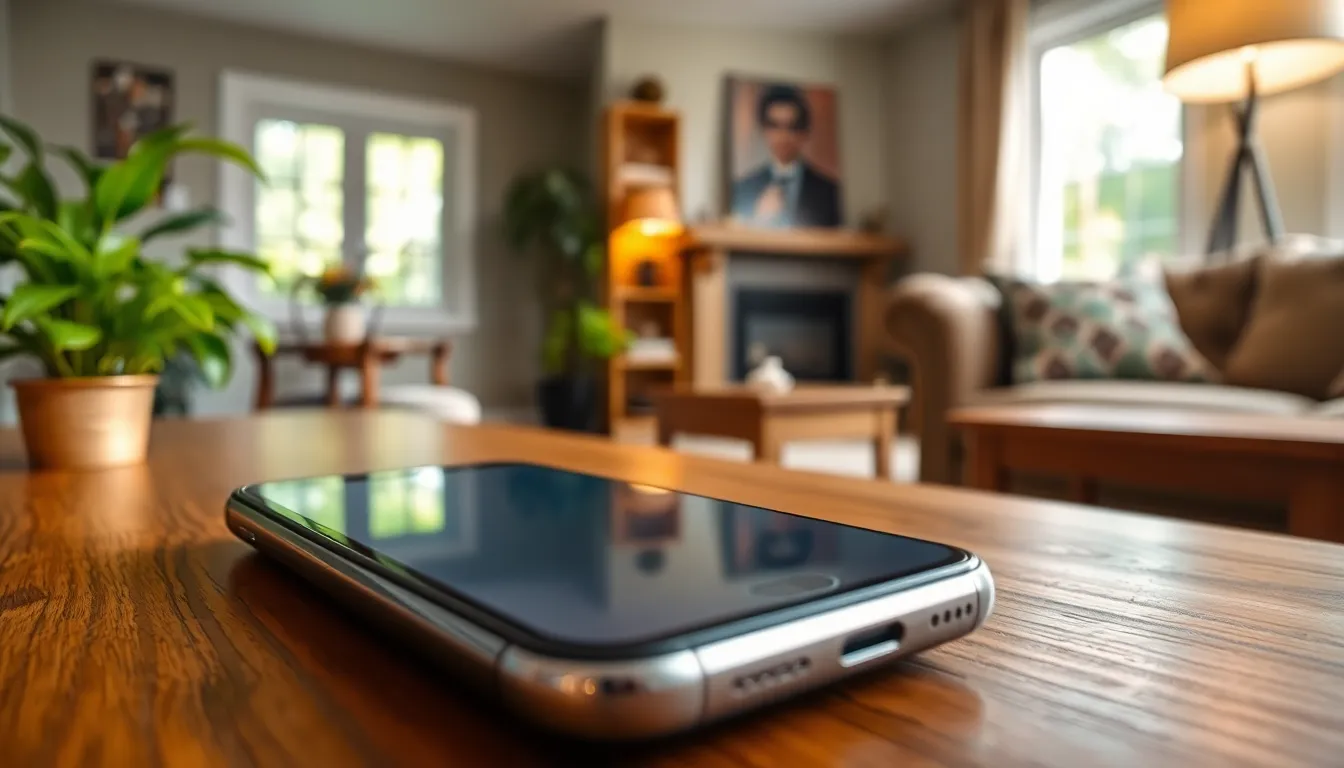Picture this: you’re in the middle of an important call, or maybe you’re just trying to scroll through memes, and suddenly your iPhone decides to play hard to get. It’s like your phone’s gone on strike, refusing to respond to your gentle taps and swipes. Frustrating, right?
Table of Contents
ToggleCommon Reasons For Touchscreen Issues
Touchscreen issues can stem from various causes. Understanding these can help resolve problems effectively.
Software Glitches
Software glitches frequently disrupt touch responsiveness on iPhones. This can occur after updates or app installations. Restarting the device often resolves minor software issues. Closing background apps might also enhance performance. In some cases, resetting settings can restore normal functionality. Keeping software updated ensures users benefit from fixes and enhancements.
Hardware Malfunctions
Hardware malfunctions can significantly impact touchscreen functionality. Loose connections or damaged components often lead to unresponsiveness. Accidental drops or spills increase the risk of such issues. Inspecting for visible damage can help identify problems. If hardware is compromised, visiting a technician or an Apple Store might be necessary. Professional diagnosis ensures that any repairs are conducted accurately.
Screen Damage
Screen damage commonly affects touch sensitivity. Cracks or scratches can interfere with how inputs register. Even minor impacts might impair touch response. Testing by gently tapping different areas of the screen indicates specific problem areas. Users should consider screen protectors to minimize future damage. Repairing or replacing a damaged screen restores the device’s usability.
Troubleshooting Steps

Addressing an unresponsive iPhone touchscreen requires specific actions. Users can follow these steps to resolve the issue.
Restarting Your iPhone
Restarting an iPhone often resolves minor software issues. To do this, press and hold the side button along with the volume button until the power off slider appears. Drag the slider to turn off the device. After waiting for about 30 seconds, press the side button again to power it back on. This simple procedure can reset system processes that interfere with touch responsiveness.
Updating Your iOS
Keeping iOS updated ensures optimal performance and security. Users can check for updates by navigating to Settings, selecting General, then tapping Software Update. If an update is available, follow the prompts to download and install it. Doing so not only enhances features but often corrects known bugs that may cause touchscreen issues.
Checking Touchscreen Sensitivity
Sometimes, touchscreen sensitivity settings can cause responsiveness problems. Navigate to Settings, then tap Accessibility, and select Touch. Ensure that settings like 3D Touch and Haptic Touch are properly adjusted. Users can test touch sensitivity by pressing different areas on the screen and observing any delayed responses. Making adjustments here helps determine if touch sensitivity is contributing to the issue.
When To Seek Professional Help
If an iPhone remains unresponsive despite troubleshooting efforts, expert assistance may be necessary. Users should consider professional help when facing persistent touchscreen issues beyond standard fixes.
Warranty Considerations
Warranty status plays a crucial role when deciding on repairs. If the device is within its warranty period, seeking help from Apple or an authorized service provider is essential. They typically cover defects in materials and workmanship, which can include touchscreen problems. Users must check the warranty terms before proceeding. Understanding warranty guidelines ensures users make informed decisions, potentially saving on repair costs.
Repair Options
Various repair options exist for an unresponsive iPhone. Visiting an authorized service center can provide a thorough diagnosis. Technicians at these facilities are trained on Apple products, offering reliable repairs with original components. Third-party repair shops also present an option, but device-makers usually recommend authorized centers for quality assurance. If repairs exceed the device’s value, users might consider upgrading to a newer model. Evaluating the most appropriate path based on budget and device age is essential.
Preventative Measures
Taking proactive steps can help maintain an iPhone’s touchscreen responsiveness. Users can protect their devices from future issues with some simple measures.
Using a Screen Protector
Selecting a high-quality screen protector enhances an iPhone’s durability. These protectors defend against scratches and impacts, significantly reducing the likelihood of damage. Tempered glass screen protectors often provide the best coverage and clarity. Regularly inspecting the screen for any signs of wear or dust buildup helps maintain touch sensitivity. Replacing a worn-out protector ensures continued protection, preserving the device’s touchscreen functionality.
Regular Software Maintenance
Keeping iOS updated plays a crucial role in touchscreen performance. Users should check for software updates frequently to benefit from bug fixes and performance enhancements. Regularly clearing unnecessary apps and data from the device prevents potential software conflicts that can lead to unresponsiveness. Engaging in periodic system restarts can also help refresh processes that might interfere with touch responsiveness. By prioritizing these maintenance tasks, users can ensure a smoother and more reliable interaction with their iPhones.
Experiencing an unresponsive touchscreen on an iPhone can be frustrating but understanding the potential causes and solutions can help restore functionality. Regular maintenance and timely updates play crucial roles in preventing issues. If simple troubleshooting steps don’t resolve the problem it’s wise to seek professional assistance to avoid further complications. Users should also consider the condition of their device and weigh repair costs against upgrading to a newer model. By taking proactive measures users can enhance their iPhone’s performance and enjoy a seamless experience.



